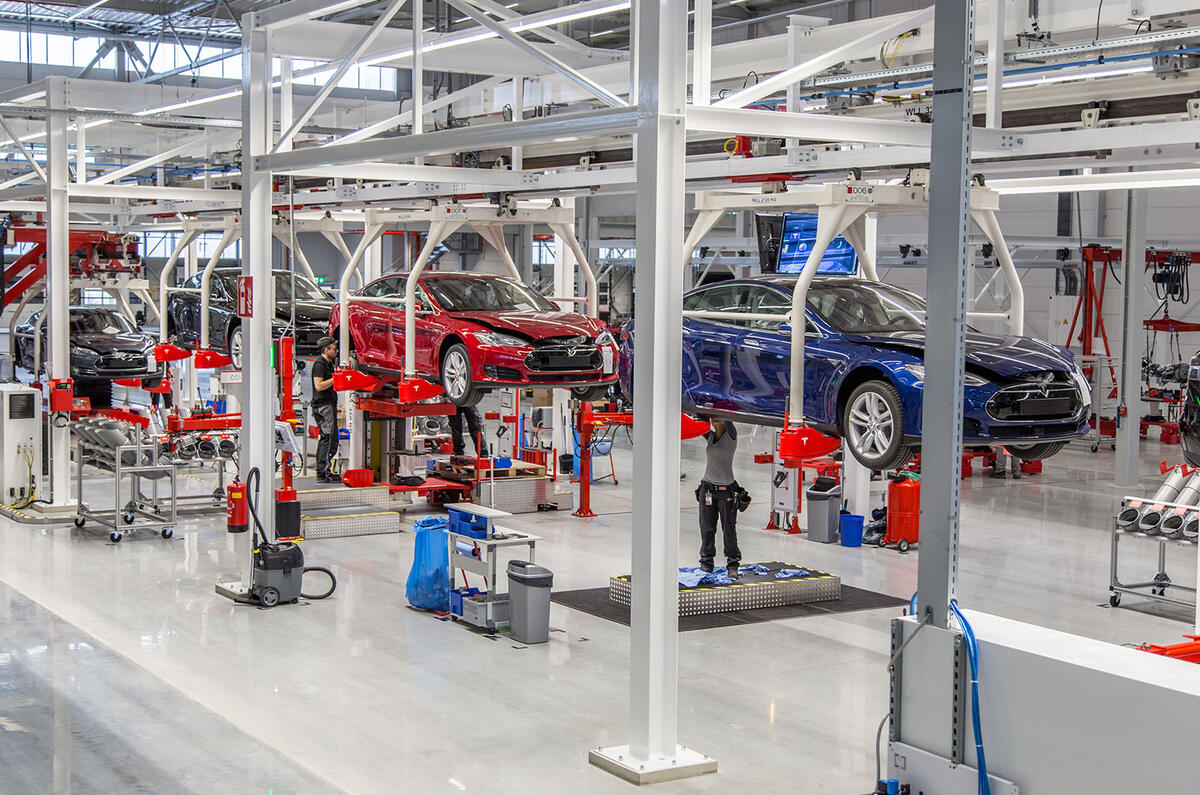Tesla CEO Elon Musk has revealed more details about the manufacturer's Gigafactory in Nevada, as well as hinting at the possibility of Gigafactories elsewhere, including Europe.
Key areas of commerce for Tesla have been identified as possible sites for more factories. Musk said: “Obviously long term it’s going to make sense to have a Gigafactory in Europe, one in China and probably one in India.
“Ultimately, wherever there is a huge amount of demand for the end product, and where the shipping costs are to become significant, then the obvious way to optimise that is to put the Gigafactory on the same continent, or at least within reasonable logistics range of the end customer.”
The speech was broadcast on BBC Radio 5 Live.
Tesla’s first Gigafactory, in Nevada, USA, will produce more lithium-ion batteries than all of the world’s current factories combined, says Musk. Jaguar Land Rover's reported plans to produce batteries in a joint factory with BMW and Ford may put this claim at risk in the future, though.
The first Tesla Gigafactory officially opens on 29 July. Musk has praised Nevada's openness to “doing things quickly and getting things started,” before dubbing it “the get things done state”.
During the speech, Musk also highlighted three criteria which were kept in mind when designing the factory - cost effectiveness, time efficiency and readiness for a mass-market model. “The Gigafactory is vital for the future of Tesla in order to produce this affordable mass-market electric car which has been our goal from the beginning.”
A large chunk of Musk’s speech was devoted to explaining how the factory will be powered – a combination of wind, solar and geothermal energy will be used, which between them will cover the factory’s entire energy consumption.
The environment also took precedent when Musk was talking about the factory – a diamond shape was chosen for the factory because that shape required less movement of earth during construction than a conventional square. This reduced the factory’s impact on the environment and increased the efficiency of the construction process.
In addition to efficiency and sustainability measures, the Gigafactory has been designed to fit into its surroundings and break the stereotype of the eyesore factory. It’ll face true north, meaning that equipment can be mapped out by GPS, as well as ensuring the optimum position and direction for the roof-mounted solar panels.








Join the debate
Add your comment
To boldly go...
good to see
Diamond
This is marketing hype on steroids !
Unless I'm going blind, the factory isn't diamond shaped. They've chamfered the corners off a conventional rectangle slightly. Really can't see how that's significantly more eco-friendly than any other factory.
Argue that over the long term it'll be lower impact (if they can keep going for long enough) by all means, but the eco-impact to build this factory must have been immense. The solar panels alone will have our planet quivering in shock.
Quivering in shock?
Twizzle695 wrote:
Hmmn. I didn't say anything about carbon dioxide cost, I said environmental cost. Which includes the toxic effects of manufacturing the cells, and the extraction of the chemicals from the planet.
And I agree with you that overall the impact of the factory may be lower. But the companies claim was specifically that the impact from BUILDING the factory is somehow lower because they clipped the corners of the rectangle very slightly. Which is silly.